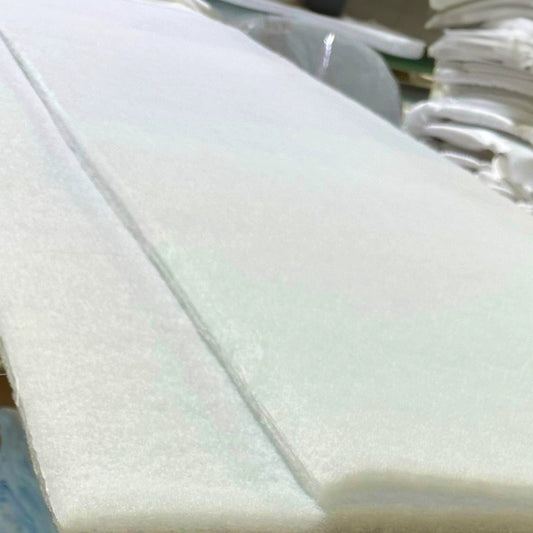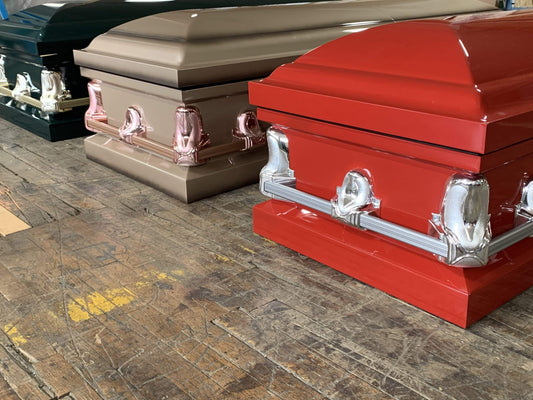What Happens to a Coffin After Cremation?
When you cremate your loved ones, along with their body, the coffin that houses them is also sent into the cremation chamber for incineration. The cremation process usually takes about 90 minutes and involves high levels of heat, up to 1,800 Fahrenheit, throughout to ensure that both the coffin as well as the body inside it turn into ash. This is precisely why many who choose this route usually tend to select a dedicated coffin for cremation.
Now, since the ash from the coffin along with the fragments of bone of the deceased tend to be very hot, it is usually allowed to cool down for a while before being transferred to a machine. This machine then crushes the fragments into fine ash and transfers it into a container or an urn provided by the family members.
Can all coffins be cremated?
No. Not all coffins are designed to be cremated. Only materials that are combustible in nature are usually placed inside the cremation chamber. Therefore, caskets and coffins made from non-combustible materials like stainless steel, bronze, copper, and other metals cannot be used for cremation.
Even when a dedicated coffin for cremation is used, the technicians present in the crematorium usually inspect the body and remove objects that might cause issues during incineration (some objects like glass bottles and pacemakers can explode in the high heat). In addition to removing non-combustible items inside the coffin and on the deceased person, technicians will also remove other incompatible items present outside the coffin as well. This includes metal side bars and handles like the ones used to lift the coffin.
What are the different types of coffins that can be cremated?
When it comes to coffins for cremation, there are multiple kinds that are compatible with incineration. Here’s a quick overview of the ones that can be cremated.
Traditional wood coffins made from Birch, Mahogany, Oak, Pine, and other types of wood are fully compatible with cremation. However, if they contain any metal handles, they’re usually removed by the crematorium technicians before sending the coffin into the incineration chamber.
That said, there are wood coffins made exclusively for cremation. These do not contain any metal or non-combustible components and can be loaded onto the chamber as it is. That’s not all. To make sure that they burn completely, manufacturers typically leave the wood untreated to speed up the combustion process. Dedicated coffins for cremations usually use inexpensive wood derived from Pine or Poplar trees.
Many manufacturers also produce coffins made from wool or fleece draped over a fiberboard frame. Wool coffins are perfect for cremation since they don’t have any non-combustible parts on them; even the handles are made from recycled or eco-friendly materials like jute. Since they’re fully eco-friendly, such coffins are also used for green burials in addition to cremation.
Wicker is one of the oldest furniture making methods known to man. It involves weaving various types of plant fibers tightly with one another to make different furniture and containers.
Wicker coffins are usually made from fast-growing plant fibers such as bamboo, rattan, willow, and seagrass. To prevent depletion of natural resources due to over-harvesting, the plant fibers used in making these coffins are cultivated and farmed. Though they are lighter than other types of coffins used for cremation, they’re surprisingly strong and can support weights of up to 350 pounds.
Cloth coffins are very similar to wool coffins, except for the fact that they’re wrapped in soft cloth rather than wool or fleece. The shell of the cloth coffin is usually made from fiberboard, which is also combustible in nature.
Cardboard coffin: A viable option for cremations
Another one of the many types of coffins used for cremations is a cardboard coffin. The cardboard used in the manufacturing is generally made from fully recycled wood, making it completely biodegradable.
A cardboard coffin for cremation doesn't use any chemicals for treatment or whitening. In fact, even the adhesive that’s used in the production of such coffins are eco-friendly and made from starch.
Although cardboard coffins may not be as elegant as other types of coffins, they’re perfect for both cremations and are fully compliant with green burials. In addition to this, cardboard coffins are sturdy and very economical.
Honor your loved ones with the right coffin
If you prefer to cremate the deceased due to religious, cultural, or personal beliefs, it is important to do it with the right coffin. In addition to providing you with some sort of a closure, a coffin or a casket also allows you to honor the dead with respect and dignity.

![Upgrade to Premium Weight [18-gauge steel]](http://titancasket.com/cdn/shop/products/casketthicknesswithnumbers.png?v=1680642906&width=533)



